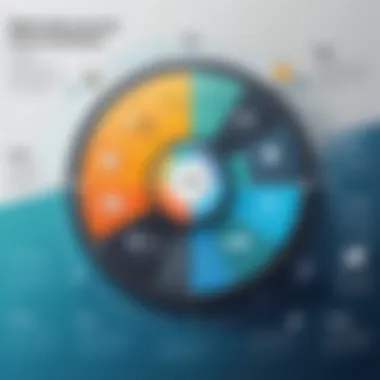Exploring Micro and Macro Economics: Key Insights


Overview of Topic
Intro to the main concept covered
Microeconomics and macroeconomics are two crucial branches of economics. Microeconomics focuses on individual actors within an economy, such as households and businesses, and how they make decisions. It studies factors like supply, demand, and market equilibrium. On the other hand, macroeconomics examines the economy as a whole. It looks at aggregate indicators like national income, inflation rates, and unemployment to understand economic performance.
Scope and significance
In today's interconnected world, understanding micro and macro is vital. Businesses make strategic decisions influenced by market behavior on a micro level while also considering how overall economic conditions might affect them. Policymakers apply principles from both branches to design effective interventions that promote growth, stability, and welfare. As global economics grow more complex, these disciplines offer frameworks for interpreting economic data and making informed decisions, vital for students and professionals alike.


Brief history and evolution
The study of economics began with philosophers like Adam Smith. His work laid the groundwork for both micro and macroeconomic principles. The separation into the two branches happened around the 20th century as economists gained access to data that illustrated how economies functioned at both individual and collective levels. From the Keynesian focus on aggregate demand to the supply-side policies of the late 20th century, the journey of economics reflects real-world complexities.
“Economics is the study of how societies use their limited resources.”
Fundamentals Explained
Core principles and theories
Microeconomics hinges on concepts such as scarcity, opportunity cost, and marginal utility. Scarcity implies that resources are finite and need to be allocated wisely. Opportunity cost denotes the benefits foregone when choosing one option over another, while marginal utility helps understand consumption behaviors based on satisfaction.


Macroeconomics is underpinned by theories like Keynesian economics, which advocates for government intervention during downturns, and classical economics, which promotes self-regulating markets. It’s important to distinguish between these principles as they reflect different approaches to problem-solving in economic contexts.
Key terminology and definitions
Some terms vital for both fields include:
- Demand: The willingness and ability of consumers to purchase goods at various prices.
- Supply: The total amount of a good or service that producers are willing to sell at different prices.
- Inflation: The rate at which the general level of prices for goods and services rises, subsequently eroding purchasing power.
- GDP (Gross Domestic Product): A broad measure of economic activity, representing the total dollar value of all goods and services produced over a specific time period.
Basic concepts and foundational knowledge


Understanding these definitions will enhance comprehension, as they form the bedrock from which further theories and applications arise. Economists frequently use models to simplify complex interactions and provide insights. These models help in forecasting future trends, a crucial skill for IT professionals and students alike.
Practical Applications and Examples
Real-world case studies and applications
In real-world scenarios, applications of micro and macro principles can be seen. For example, the rise of digital health solutions reflects microeconomic behavior. Companies respond to consumer demands for better health management tools with more personal health apps like MyFitnessPal and digital platforms like Teladoc. Macroeconomic applications also filter through as national governments use macroeconomic metrics to structure relief efforts during recessions, as seen in the 2008 Global Financial Crisis.
Demonstrations and hands-on projects
Simple exercises can allow students to understand these principles practically. For instance, researching how supply and demand apply to a local market can provide insights into real-life economic applications. Students can collect data on pricing trends, sales volume, or even impact assessment on specific sectors affected by regulatory changes.
Code snippets and implementation guidelines
In economics, data analysis software might employ coding snippets in Python for manipulating data.







